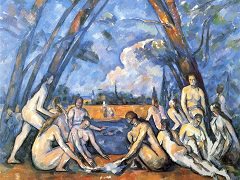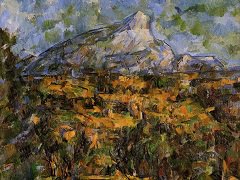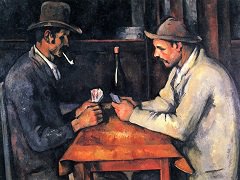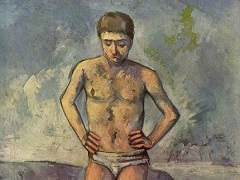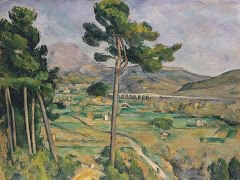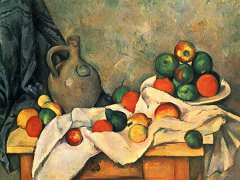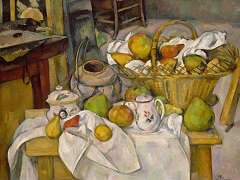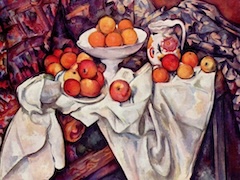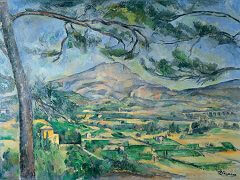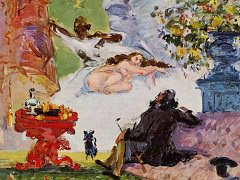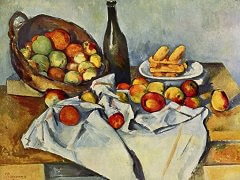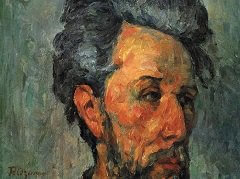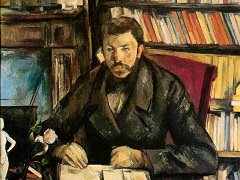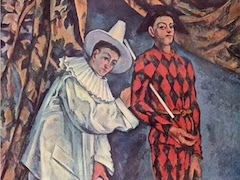Le Chateau Noir, 1906 by Paul Cezanne
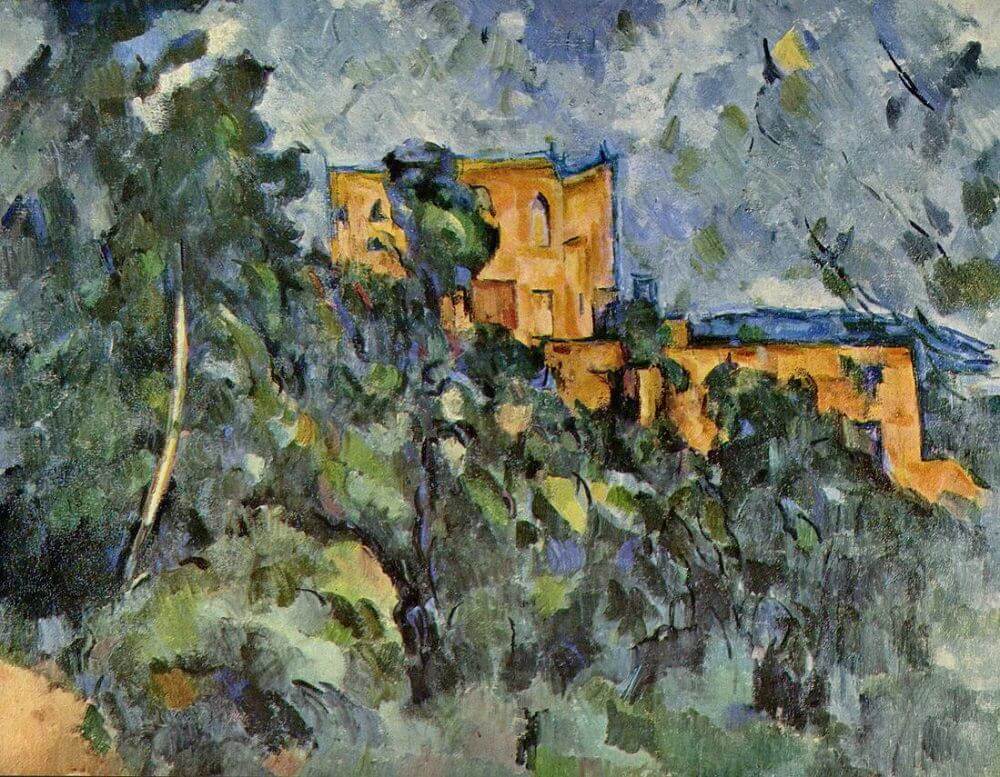
Le Chateau Noir, 1906, the paintings of Cezanne's last years have an epic largeness. He sees nobly and builds with a few clear objects; but these are tremendously alive, throbbing with color and the powerful rhythm of the brush strokes. Each area approaches an ultimate of movement and depth, within the limits of simplicity and grandeur of form. The strokes have become larger and more impassioned, the silhouettes more flickering in their contention with neighboring tones. In this impulse-charged rendering of great masses, the smallest inflections count, without appearing contrived. The pliant tree at the left, the thin wavering lines of branches in the sky at the right are responding forms, which seem to flow from the rhythm of the surrounding strokes. The irregular and, in places, flame-like silhouette of the trees against the sky and building has no drawn outline, but owes its moving form to the life within the colored mass. It is contrasted with the regular forms of the building - a stable ruin, in which we feel, however, through the patched, hot coloring and vibrant edges, the pulse and instability of life. It is an exalted, passionate meditation, in which the great constants of the forest, the building, and the sky are suffused with the artist's deep fervor.
Its simplicity belongs to the greatest masters. In the middle of the space is the roofless building with severely vertical and horizontal forms, like the canvas itself, and with burning orange tones; it is marked, near the center of the canvas, by a red door. This bare right-angled form, cut diagonally by the trees, and itself asymmetrical and broadly diagonal in profile through its stepped lines, resists and is absorbed into a more unstable whole of great asymmetrical zones - the deep blue sky and the darker trees below which slope across the entire canvas.
The third dimension is achieved by the barest means, without a single horizontal plane and with only the slightest element of foreshortening, by the overlapping of the three large masses of trees, building, and sky, and by the unequal intervals of brightness in the series of the three major tones.

